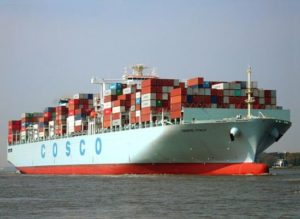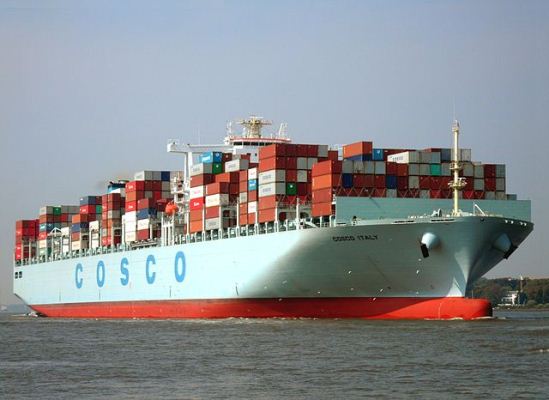 Industry analyst Drewry foresees rising freight rates and narrowing shippers’ choices with news of the purchase offer for Orient Overseas International Ltd (OOIL) by Cosco Shipping Holdings Ltd (Cosco) and Shanghai International Port Group Co. (SIPG).
Industry analyst Drewry foresees rising freight rates and narrowing shippers’ choices with news of the purchase offer for Orient Overseas International Ltd (OOIL) by Cosco Shipping Holdings Ltd (Cosco) and Shanghai International Port Group Co. (SIPG).
Drewry in a new analysis said that when all the latest merger and acquisition (M&As) deals have been concluded and the existing newbuilding delivered, the top seven ocean carriers will control about three-quarters of the world’s containership fleet by 2021. Back in 2005 the same bracket of carriers held a share of around 37%, it noted.
“Shippers are getting used to consolidation in the container industry. That doesn’t mean they have to like it. Even though OOIL/OOCL will remain as a separate brand [from Cosco] it is questionable just how independent they will be from one another. Effectively, shippers will be losing yet another carrier from the pool that increasingly resembles more of a puddle,” it added.
On July 9, Hong Kong-based OOIL announced that Chinese state-owned Cosco and SIPG offered to acquire all its shares at an offer price of HKD78.67 (US$10.07) per share.
When the deal is closed, Cosco will hold 90.1% while SIPG will hold the remaining 9.9% stake in OOIL. The joint buyers plan to keep the OOIL branding, retain its listed status, and maintain the companies’ global headquarters in Hong Kong along with all management.
Drewry research shows that the number of vessel operators on the two biggest deep-sea trades, trans-Pacific and Asia-North Europe, has reduced significantly over the past two years. As of June 2017 there were only nine different carriers deploying ships in Asia-North Europe, compared to 16 in January 2015. In the trans-Pacific the number has reduced from 21 to 16 over the same period.
“The accelerating trend towards oligopolisation in container shipping will reduce shippers’ options and raise freight rates. It is the unfortunate price to be paid for years of non-compensatory freight rates that have driven carriers to seek safety in numbers, either through bigger alliances and/or M&A.”
But Drewry said this is likely the last of the big M&As in the industry. “The sale of OOIL/OOCL means there aren’t many other takeover candidates left on the shelf. Such is the scale of the carriers within the top 7 that any merger within that group would find it difficult to pass regulatory approval.”
It said there might still be some minor regional acquisitions “but the big wave of container M&A looks to have been concluded with this deal.”
Less competition, more profit
With the consolidation, Drewry said the big carriers remaining will become financially stronger and are looking at increased profitability.
“Notwithstanding any potential roadblocks to future M&A, the consolidation that has already occurred, plus much brighter market prospects and the moratorium on new ships, offers carriers a golden opportunity for far greater profitability in the near future,” said Drewry. “With fewer carriers, that in time will become financially stronger, the pendulum is swinging back towards those that have grown to survive.”
Based on existing fleet and orderbooks, the combined Cosco-OOIL entity would become the world’s third largest container carrier, overtaking its partner in the Ocean Alliance, CMA CGM.
Their merger will have the biggest impact in intra-Asia, where both carriers already have a large presence, while the footprint in the Asia-to-Middle East trade will also rise significantly.
The acquisition will enable Cosco to broaden its customer base. OOCL’s good track record for above-average profits in a challenging market, a reputation for being a very well-run company, and history with global shippers will provide Cosco with an inroad to a wider selection of big Western shippers with volume.
Photo: Hummelhummel





